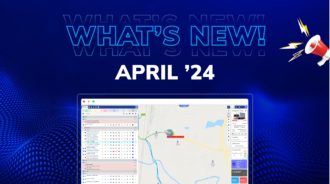In an era where technological advancements are revolutionizing every industry, the realm of fleet management is no exception. Driver management software has become a cornerstone for efficient fleet operations, providing unparalleled insights and control. This article delves into the intricate capabilities of modern driver management software and how it’s shaping the future of fleet management.
The Evolution of Driver Management Software
Driver management software has come a long way from its initial days of basic tracking and scheduling. Today, it encompasses a wide array of functionalities that go beyond mere management – it’s about optimizing operations, enhancing driver safety, and boosting overall efficiency.
The Early Days of Fleet Management
The journey of driver management software began with simple tools focused primarily on tracking and scheduling. In its earliest form, this software provided basic GPS tracking capabilities, allowing fleet managers to know the location of their vehicles. These initial systems were revolutionary for their time, offering rudimentary insights into fleet operations.
Transition to Integrated Systems
As technology advanced, these systems evolved to offer more than just location tracking. The integration of various data points became a focal point. This era saw the introduction of features like route optimization, vehicle maintenance scheduling, and basic reporting functions. The software began to integrate with other business systems, such as HR and finance, allowing for a more comprehensive approach to fleet management.
Emergence of Real-Time Data and Analytics
The advent of real-time data transformed driver management software into dynamic tools for fleet optimization. Fleet managers could now receive instant updates on vehicle locations, driver behavior, and vehicle health. This shift marked the beginning of predictive analytics in fleet management, where data began to be used for making proactive decisions rather than just reactive ones.
Incorporation of Driver Safety and Compliance
With increasing focus on road safety and regulatory compliance, driver management software started incorporating features to monitor driver behavior, ensure compliance with driving hours regulations, and provide training modules for drivers. This not only helped in reducing accidents and improving safety records but also ensured adherence to legal requirements.
Integration of IoT and AI
The latest phase in the evolution of driver management software involves the integration of Internet of Things (IoT) and Artificial Intelligence (AI). IoT devices provide vast amounts of data from vehicles, which, when analyzed with AI, offer unprecedented insights. This includes predictive maintenance, where AI algorithms predict vehicle breakdowns before they happen, and advanced route optimization, which considers real-time traffic data, weather conditions, and driver hours.
Key Features of Modern Driver Management System
Modern driver management systems are equipped with a variety of features that make fleet management seamless and efficient. Some of the key features include:
1. Advanced Real-Time Tracking and Monitoring
- GPS Tracking: Utilizes satellite technology for precise vehicle location tracking, offering fleet managers real-time visibility of their fleet’s movements.
- Geofencing: Allows managers to create virtual geographic boundaries and receive alerts when vehicles enter or exit these zones, helping in route compliance and security management.
2. Comprehensive Driver Behavior Analysis
- Safety Monitoring: Tracks driver behaviors such as speeding, harsh braking, and rapid acceleration to identify risky behaviors and provide coaching opportunities.
- Performance Metrics: Evaluates drivers based on various metrics like route adherence, time management, and fuel efficiency, contributing to performance reviews and reward programs.
3. Intelligent Fuel Management
- Fuel Usage Tracking: Monitors fuel consumption patterns to identify inefficiencies and opportunities for cost savings.
- Eco-Driving Insights: Provides data on driving habits that affect fuel consumption, guiding drivers towards more fuel-efficient practices.
4. Automated Maintenance Alerts
- Predictive Maintenance: Utilizes vehicle data to predict when maintenance is needed, preventing breakdowns and extending vehicle lifespan.
- Service Scheduling: Automates the scheduling of regular maintenance tasks, ensuring that vehicles are always in optimal condition.
5. Data Analytics and Reporting
- Customizable Reports: Generates detailed reports on various aspects of fleet operations, such as fuel usage, maintenance schedules, and driver performance.
- Data-Driven Decisions: Empowers managers to make informed decisions based on comprehensive data analysis, leading to increased operational efficiency.
6. Route Optimization and Dispatch
- Dynamic Routing: Adjusts routes in real-time based on traffic conditions, delivery schedules, and other variables.
- Efficient Dispatch: Ensures that the right vehicle is assigned to the right job at the right time, maximizing resource utilization.
7. Integration with Enterprise Systems
- Seamless Connectivity: Integrates with other business systems like ERP, HR, and accounting software, providing a unified view of business operations.
- API Support: Offers API integration capabilities for custom functionality and data sharing with third-party applications.
8. Mobile Accessibility and User Interface
- Mobile Apps: Provides mobile applications for on-the-go management and driver communication.
- User-Friendly Interface: Features an intuitive interface for easy navigation and quick access to vital information.
9. Compliance and Documentation Management
- Regulatory Compliance: Helps maintain compliance with various regulations such as hours of service (HOS) and electronic logging device (ELD) mandates.
- Document Management: Stores and manages important documents such as licenses, insurance papers, and vehicle registration documents digitally for easy access.
10. Sustainability and Environmental Impact
-
- Carbon Footprint Tracking: Monitors and reports on the environmental impact of fleet operations.
- EV Management: Includes features for managing electric vehicles, including charging schedules and range management.
Integration with Advanced Fleet Management Software
Driver management software seamlessly integrates with advanced fleet management systems. This integration provides a comprehensive view of fleet operations, ensuring better resource allocation, enhanced compliance with safety regulations, and improved decision-making based on data analytics.
The Latest Trends in Driver Management Software
The current trends in driver management software are shaping the future of fleet management. Some of the notable trends include:
- Mobility-as-a-Service (MaaS): This emerging trend focuses on optimizing vehicle utilization and embracing vehicle sharing, significantly impacting fleet management strategies.
- Predictive Maintenance: Leveraging data for proactive maintenance scheduling reduces downtime and operational costs.
- Sustainable Fleet Operations: Modern software plays a crucial role in promoting sustainability by enabling efficient fuel usage and reducing carbon emissions.
The Impact of Driver Management System on Fleet Efficiency
The implementation of driver management systems has a profound impact on fleet efficiency. By providing detailed insights into driver behavior, vehicle health, and operational metrics, these systems enable fleet managers to make informed decisions, leading to increased productivity and reduced operational costs.
Future Directions and Innovations
The future of driver management software is geared towards more AI-driven solutions, enhanced integration with IoT devices, and further advancements in sustainability and driver safety initiatives. These innovations promise to make fleet management more efficient, cost-effective, and environmentally friendly.
Conclusion
Modern driver management software stands at the forefront of technological innovation in fleet management. By embracing the latest trends and integrating with advanced fleet management systems, businesses can achieve unparalleled efficiency and sustainability. As the software continues to evolve, it will undoubtedly play a pivotal role in shaping the future of fleet operations.



